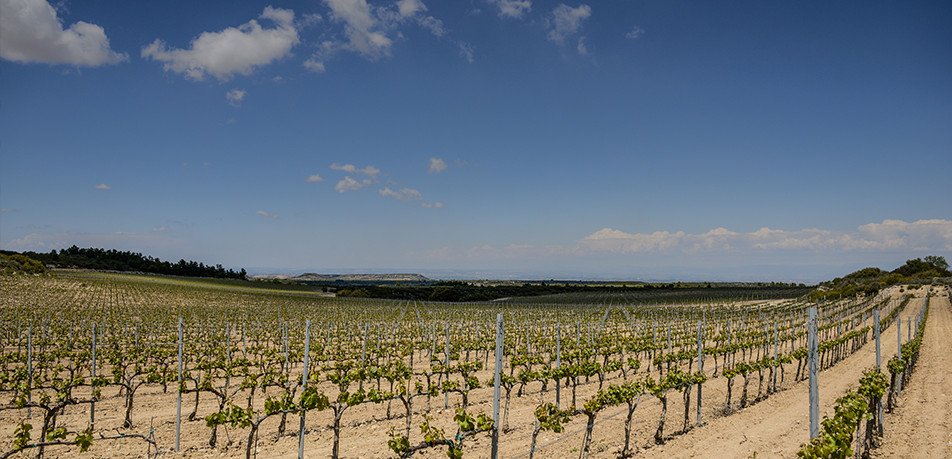The Muted Beauty of a Dry Spring

Beauty is one of the reasons why we combat the causes of climate change to mitigate its worst effects—like the beauty of vineyards in spring.
It is the beginning of April, and the vineyards are a sad sight, nowhere near as lush as they should be this time of year. High temperatures and a lack of rain have muted the countryside's vigor.
After the second driest winter of the century so far, with rainfall amounting to less than half the average, spring isn't looking any better, and nature is feeling the effects.
[[{"fid":"19278","view_mode":"default","fields":{"format":"default","alignment":"","field_file_image_alt_text[und][0][value]":false,"field_file_image_title_text[und][0][value]":false},"type":"media","field_deltas":{"1":{"format":"default","alignment":"","field_file_image_alt_text[und][0][value]":false,"field_file_image_title_text[und][0][value]":false}},"link_text":null,"attributes":{"height":543,"width":805,"style":"height: 337px; width: 500px;","class":"media-element file-default","data-delta":"1"}}]]
Precipitation levels (l/m2) for the winter periods 1965–2018 (Source: AEMET)
Drought has always been a characteristic of the Mediterranean climate, and winegrowing has found ways of fully adapting to this reality. Until now, that is. Global warming is aggravating this characteristic and testing the resilience of the vineyards.
Climate change is hitting the Mediterranean region on two fronts: we are seeing increasingly severe droughts followed by increasingly intense rainy periods, which often result in catastrophic flood events. It is true, the amount of rain is the same—but the way it rains is worse. Meanwhile, the in-between seasons are largely disappearing.
The AEMET (Spain's National Meteorological Agency) has indicated that summers now last five weeks longer than during the 1980s. This phenomenon is even more striking in the Mediterranean where summer conditions last a day longer every year.
[[{"fid":"19280","view_mode":"default","fields":{"format":"default","alignment":"","field_file_image_alt_text[und][0][value]":false,"field_file_image_title_text[und][0][value]":false},"type":"media","field_deltas":{"2":{"format":"default","alignment":"","field_file_image_alt_text[und][0][value]":false,"field_file_image_title_text[und][0][value]":false}},"link_text":null,"attributes":{"height":673,"width":680,"style":"height: 495px; width: 500px;","class":"media-element file-default","data-delta":"2"}}]]
The red line indicates snow reserves for the 2018–19 winter period compared to earlier periods (Source: AEMET)
Summer is becoming the predominant season, which means deserts are taking over Spain: devouring landscapes, making traditional farming difficult, and diminishing beauty. The surface area of arid or semi-arid soils is growing at a fast pace: more than 10,000 square kilometers per decade.
At this rate, the mosaic of cropland and woodland that has long defined the Mediterranean landscape will have vanished almost completely by the end of this century.
[[{"fid":"19281","view_mode":"default","fields":{"format":"default","alignment":"","field_file_image_alt_text[und][0][value]":false,"field_file_image_title_text[und][0][value]":false},"type":"media","field_deltas":{"3":{"format":"default","alignment":"","field_file_image_alt_text[und][0][value]":false,"field_file_image_title_text[und][0][value]":false}},"link_text":null,"attributes":{"height":473,"width":711,"class":"media-element file-default","data-delta":"3"}}]]
What flowering vineyards usually look like in El Lloar (DOQ Priorat), a Familia Torres property
The lushness of springtime vineyards is a hallmark of this landscape: an explosion of green that envelops the bare canes in a leafy canopy, providing a habitat for great biodiversity and giving us one of the most precious fruits on Earth.
For all of the reasons above and in the name of beauty: let's join forces to reduce the causes that are driving climate change toward worst-case scenarios, and let's contribute to mitigating its effects.
